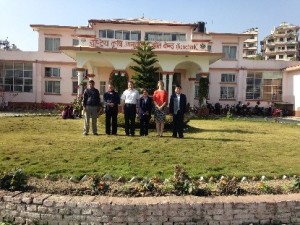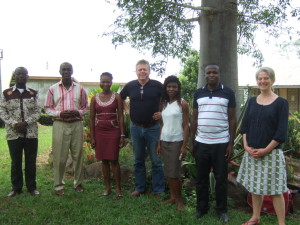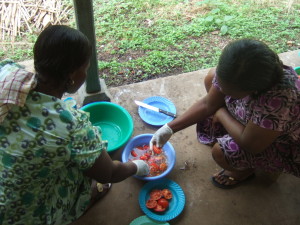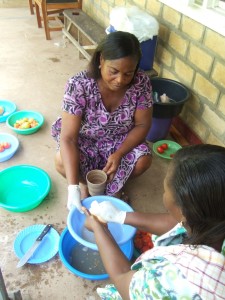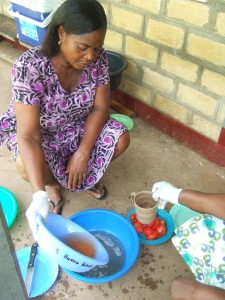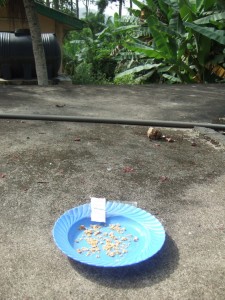Category : News
Published : May 28, 2015 - 8:44 AM
MARDI (Malaysia) and NARC (Nepal)
Jonas Mueller (Senior Research Leader for Seed Conservation at the MSB, Kew) and Alicky Davey, (Crop Wild Relatives Country Programme Officer) visited the Malaysian Agricultural Research and Development Institute (MARDI) and the Nepalese National Agricultural Genetic Resources Centre (NARC) at the end of last year as part of ongoing negotiations with the organisations. One particular highlight of the trip was the visit to MyGenebank in Malaysia, where Alicky and Jonas tasted the first Durian fruits of the season. The fruits were perfectly ripe, superfresh, freshly harvested and shipped from one of the MARDI field stations to MyGenebank.
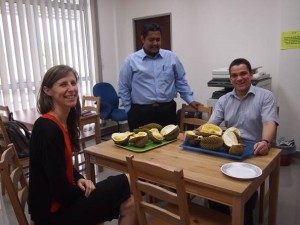
Dr. Mohd Shukri bin HJ. Mat Ali Ibrahim, Jonas and Alicky taste the first Durian fruits of the season. Photo C by MARDI
Ghana
Tim Pearce (Conservation Partnership Co-ordinator for Africa) and Elinor Breman (MSB Partnership Administrator) recently visited MSB partners in Ghana at the end of April 2015 to help further enable the Crop Wild Relatives project. Meetings were held at the Plant Genetic Resources Research Institute (PGRRI) in Bunso with Dr Laurence Aboagye and his team, and with Prof. Gabriel Ameka and staff from the Department of Botany, University of Ghana, who will be collaborating with PGRRI on the collection of crop wild relative seeds in Ghana. Tim and Elinor received wonderful hospitality during their stay, and once work plans and budgets were drawn up they had the opportunity to visit the arboretum and experience the new canopy walkway.
During the visit to PGRRI there was the opportunity to observe how a variety of tomatoes that had been collected had their seeds cleaned and processed for storing. During the process, two women dealt with the tomatoes very swiftly by cutting them in half and soaking them in water. Wearing gloves they then pushed the seeds out into the water, discarding the pulp. Most of the water was then decanted and the remainder was sieved through a mesh cloth. The seeds could then be removed from the cloth and spread out for drying with one bowl of tomatoes taking approximately 3-5 minutes to process.
Written by : Danielle Haddad, Communications Assistant for the Crop Wild Relatives Project, Elinor Breman MSB Partnership Administrator, and Jonas Mueller Senior Research Leader for Seed Conservation at the MSB, Kew.
